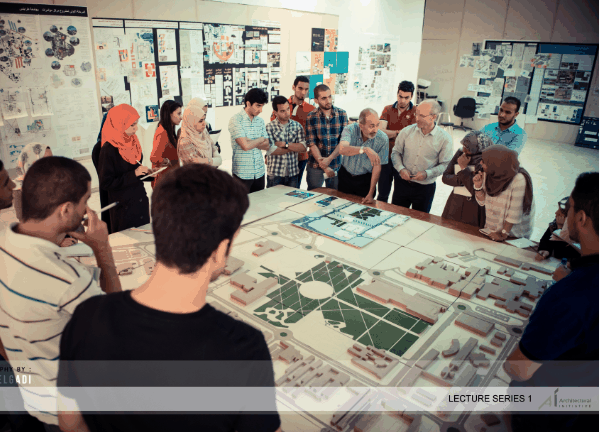Identity & Place-Making: Cullinan Studio Teaching Visit to Tripoli
“Where should we look for Libya’s identity?”
“How can we make Libya’s towns into better places?”
These are questions that will - or at least should - come to dominate Libya's built environment debate.
They were questions that we asked and were asked by students during our recent visit to Tripoli University’s Department of Architecture and Urbanism and we had discussed the same two months earlier with Libyan academics, practitioners and government ministers during our visit to Tripoli with the Royal Institute of British Architects. This time we were in Tripoli at the invitation of Architectural Initiative – an organisation dedicated to connecting international architects with Tripoli University, Department of Architecture and Urban Planning.
The answers to these questions – “identity” and “place” – we believe, lie in Libya itself. “Context, climate and an architecture of place-making” was the title for lectures given to a public audience at the King Old Palace in Tripoli and again to students at the University “The importance of place, people and communities in making architecture that belongs.” This was also the message of our student workshops, working with the next generation of about-to-graduate architects to build up a logic of appropriate design or else face the alternative of irreversible place-less-ness.
Libya – as across the world – has grown to become reliant on the car, air-conditioning and the light bulb. A warm climate and abundant energy make it OK to make windowless, stand-alone buildings in a sea of car parking. Libya has forgotten the importance of street and place, thinking instead of buildings as objects and rarely of the quality of the spaces that surround them. Turning this tide will not be easy but it will become harder still if the international architectural community fails to connect with practitioners, students, teachers and policy-makers at the front line of the debate.
The enthusiasm of the final year students that we met in Tripoli was as understandable as it was exhausting. Their eagerness comes after years of waiting for international architects to take time out of their pressured visits to Libya to engage with the country beyond the needs of their own projects or the pursuit of others.





